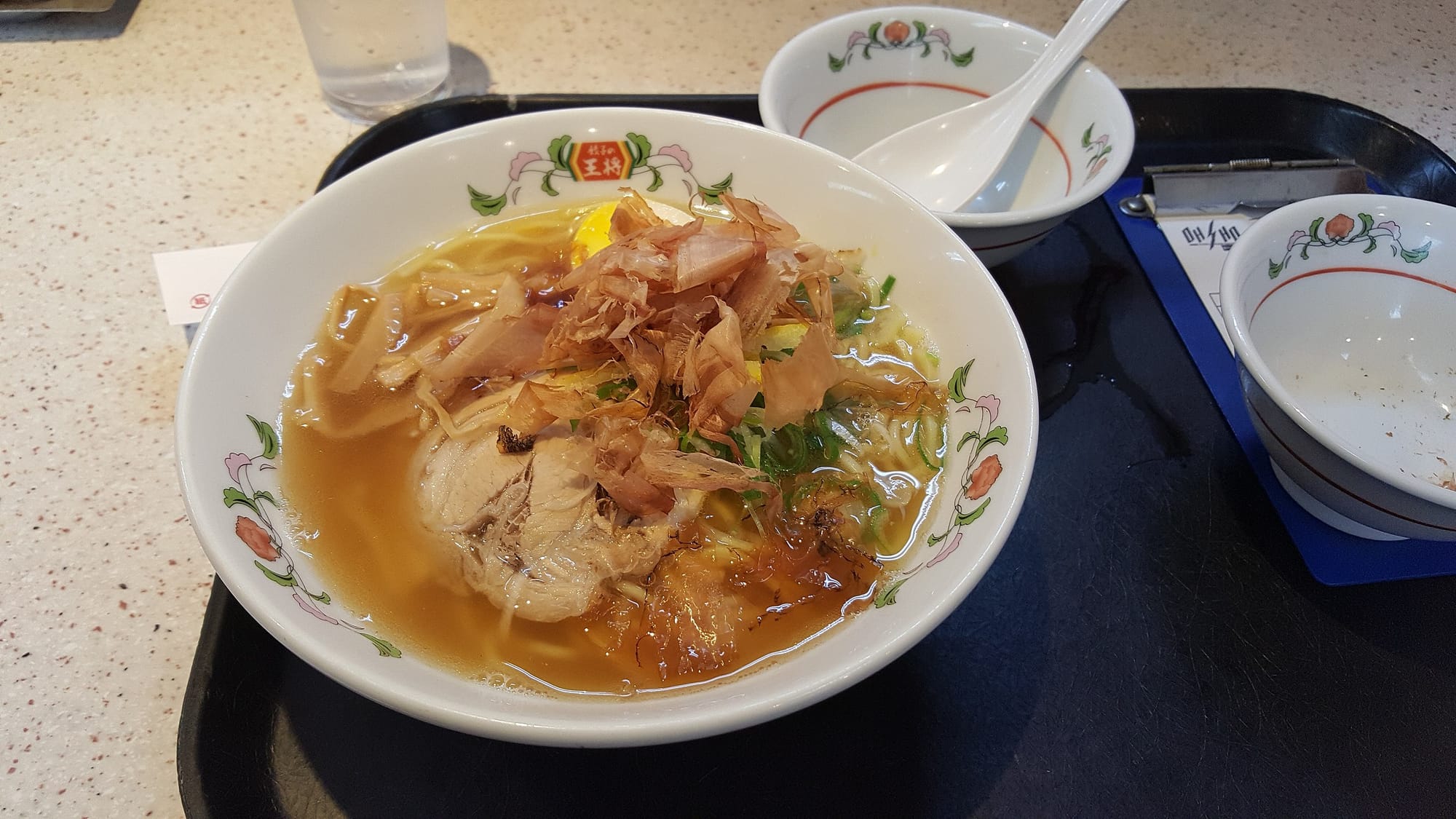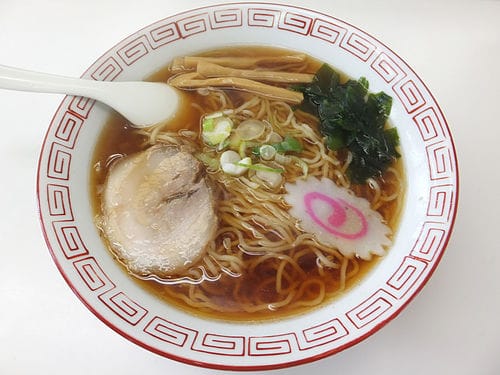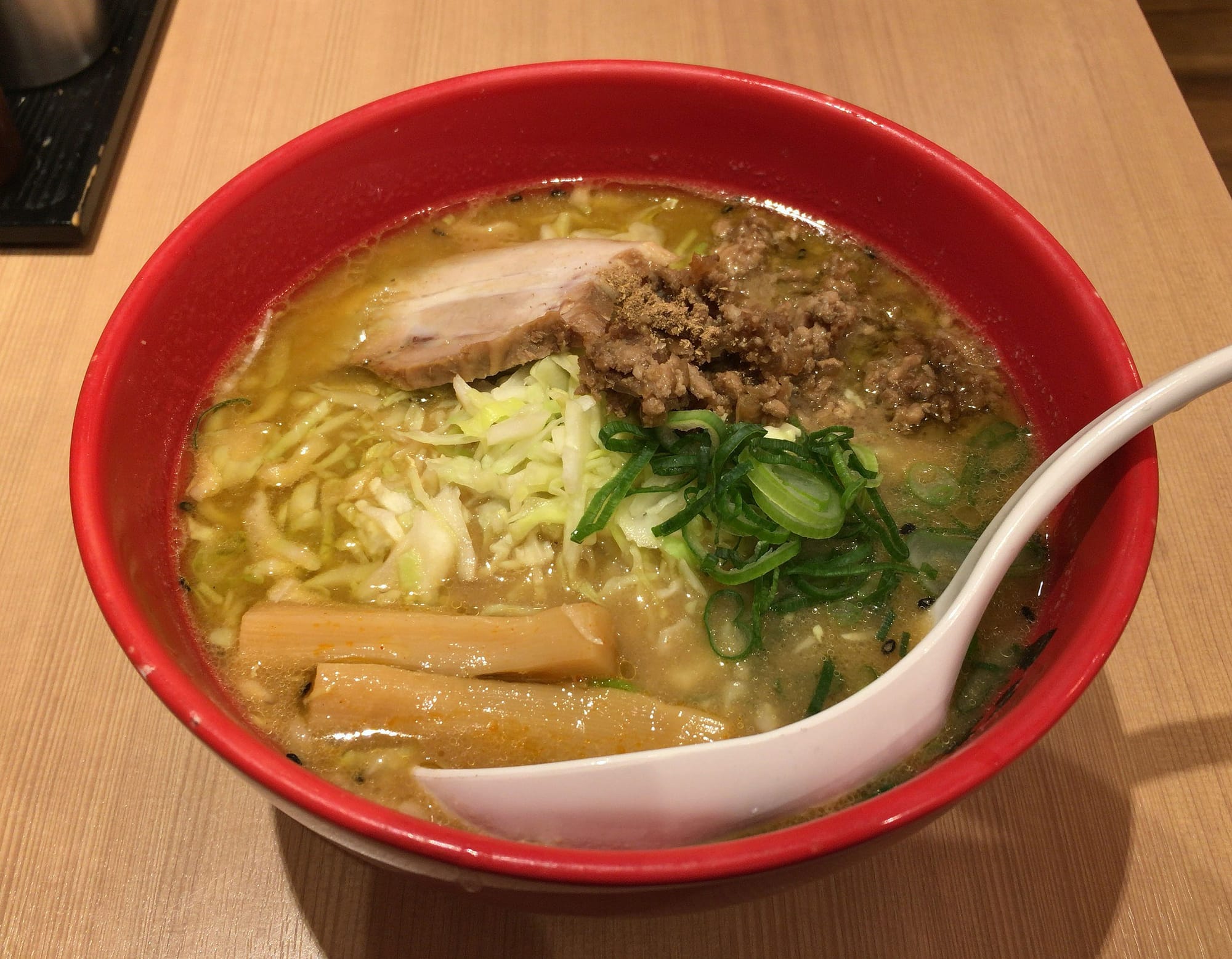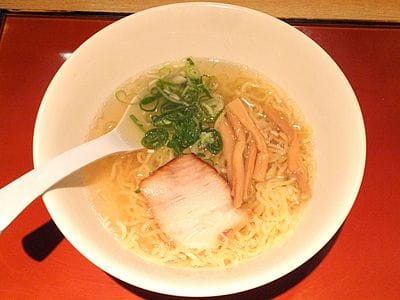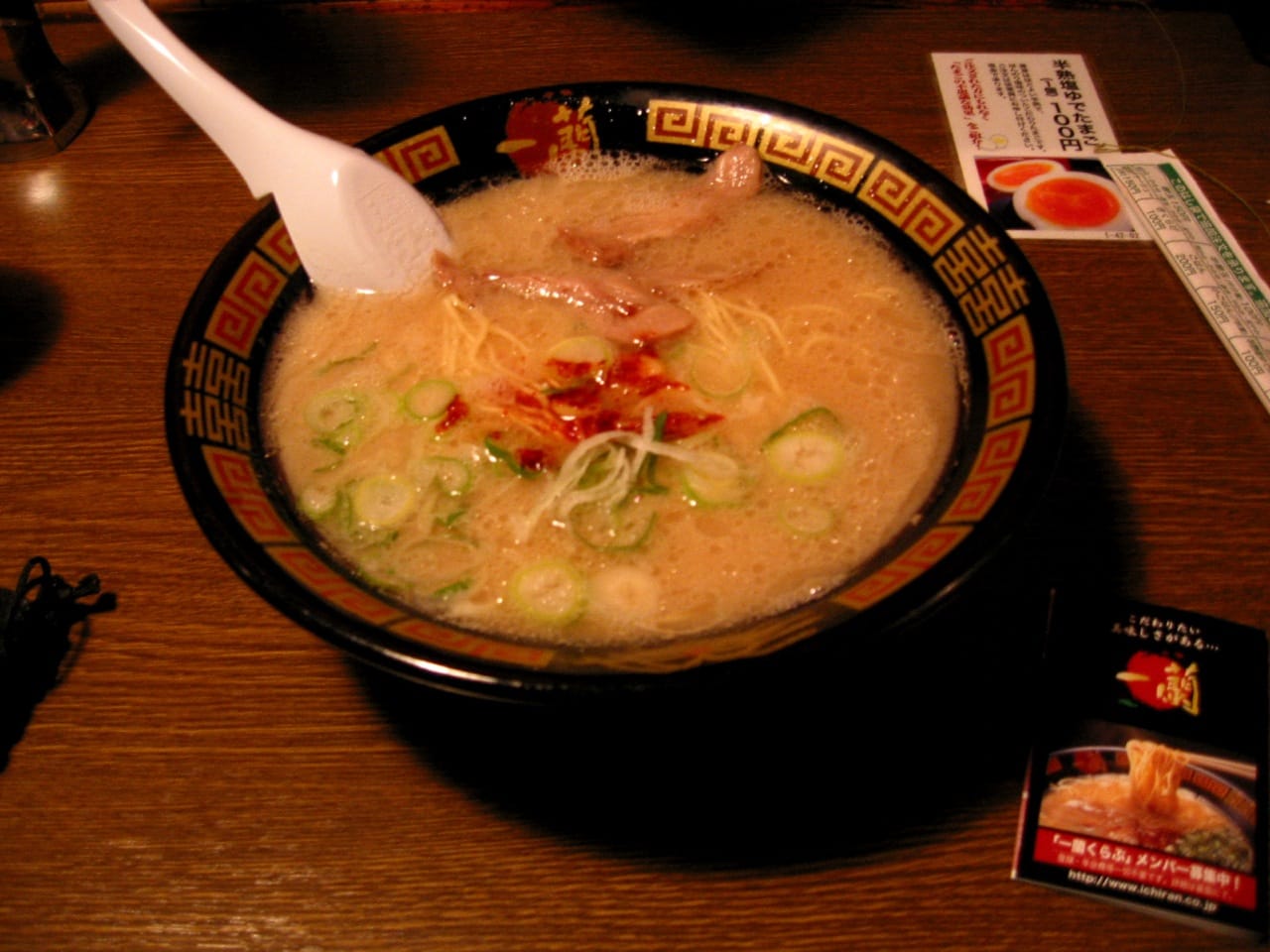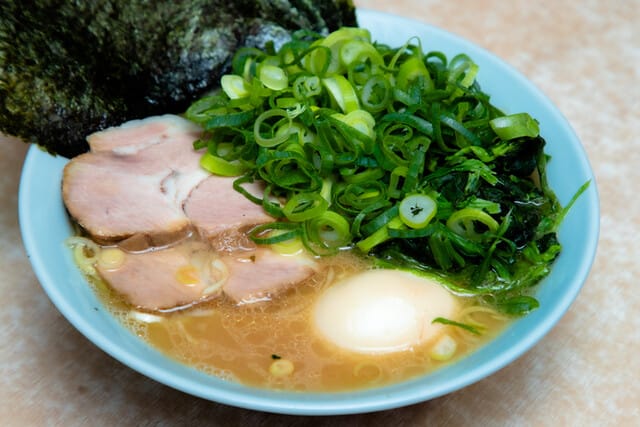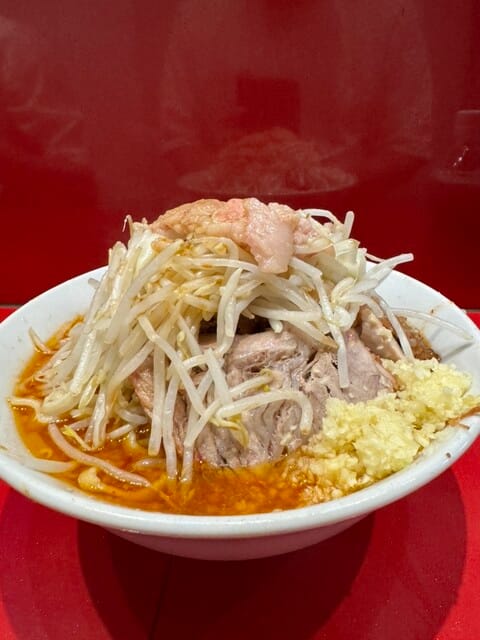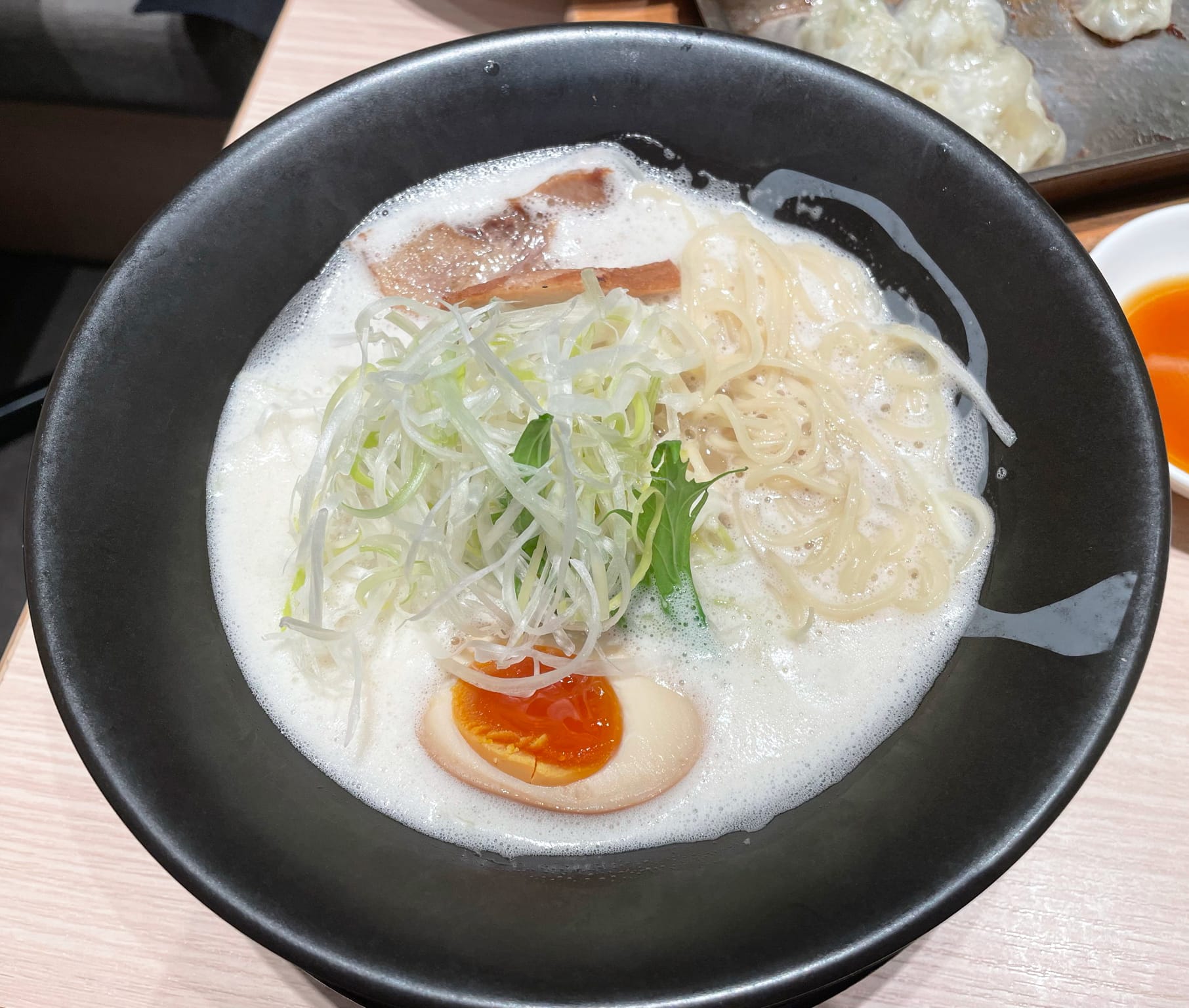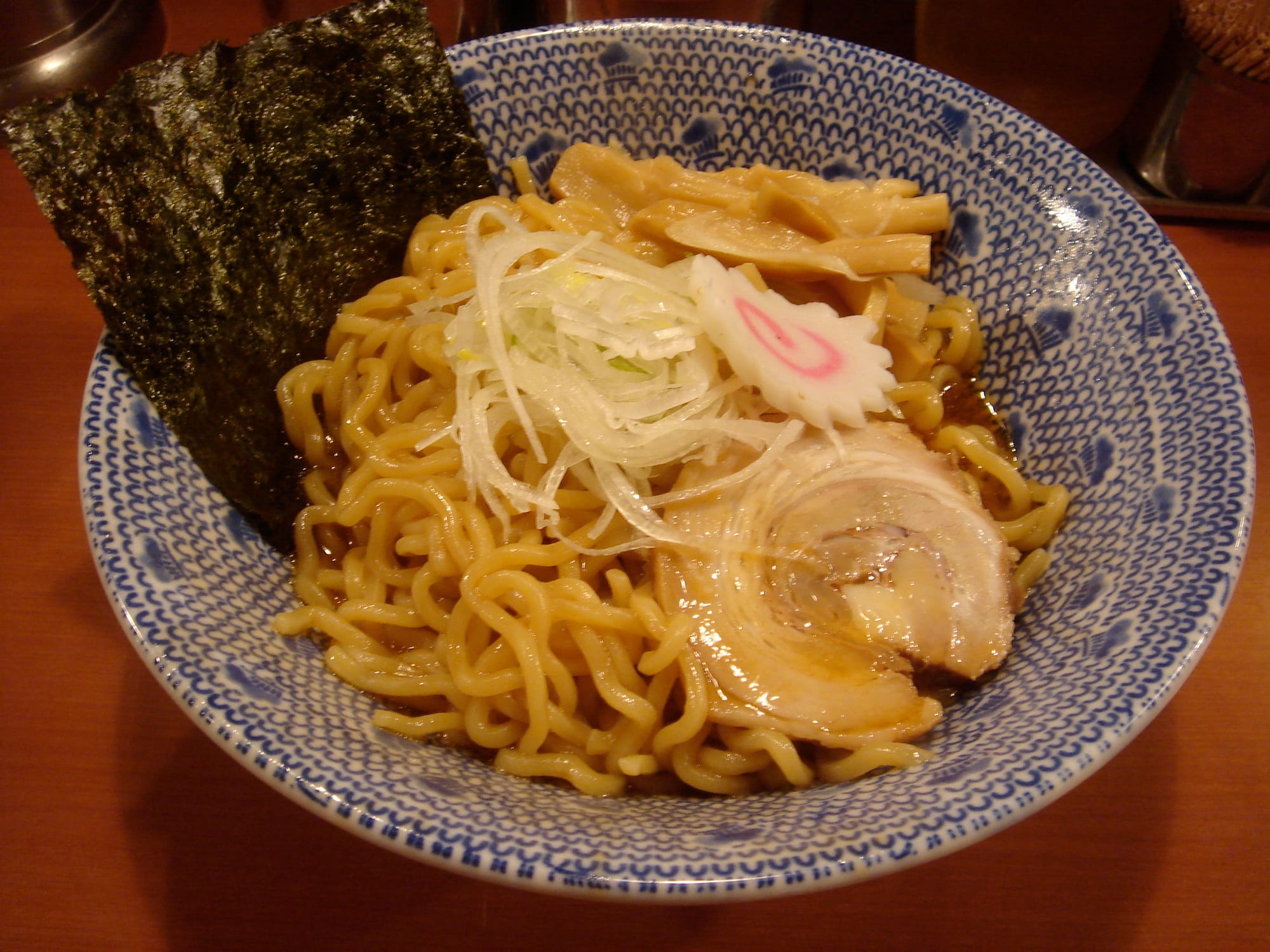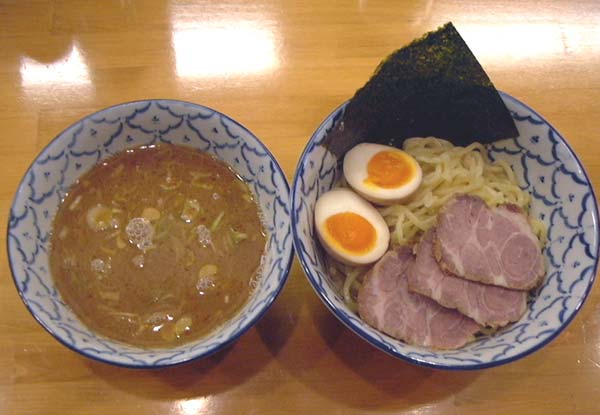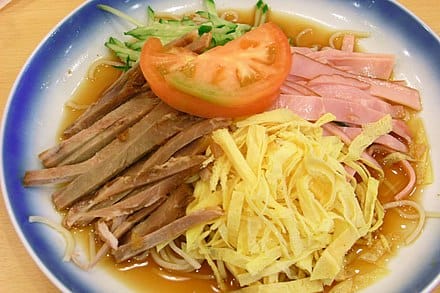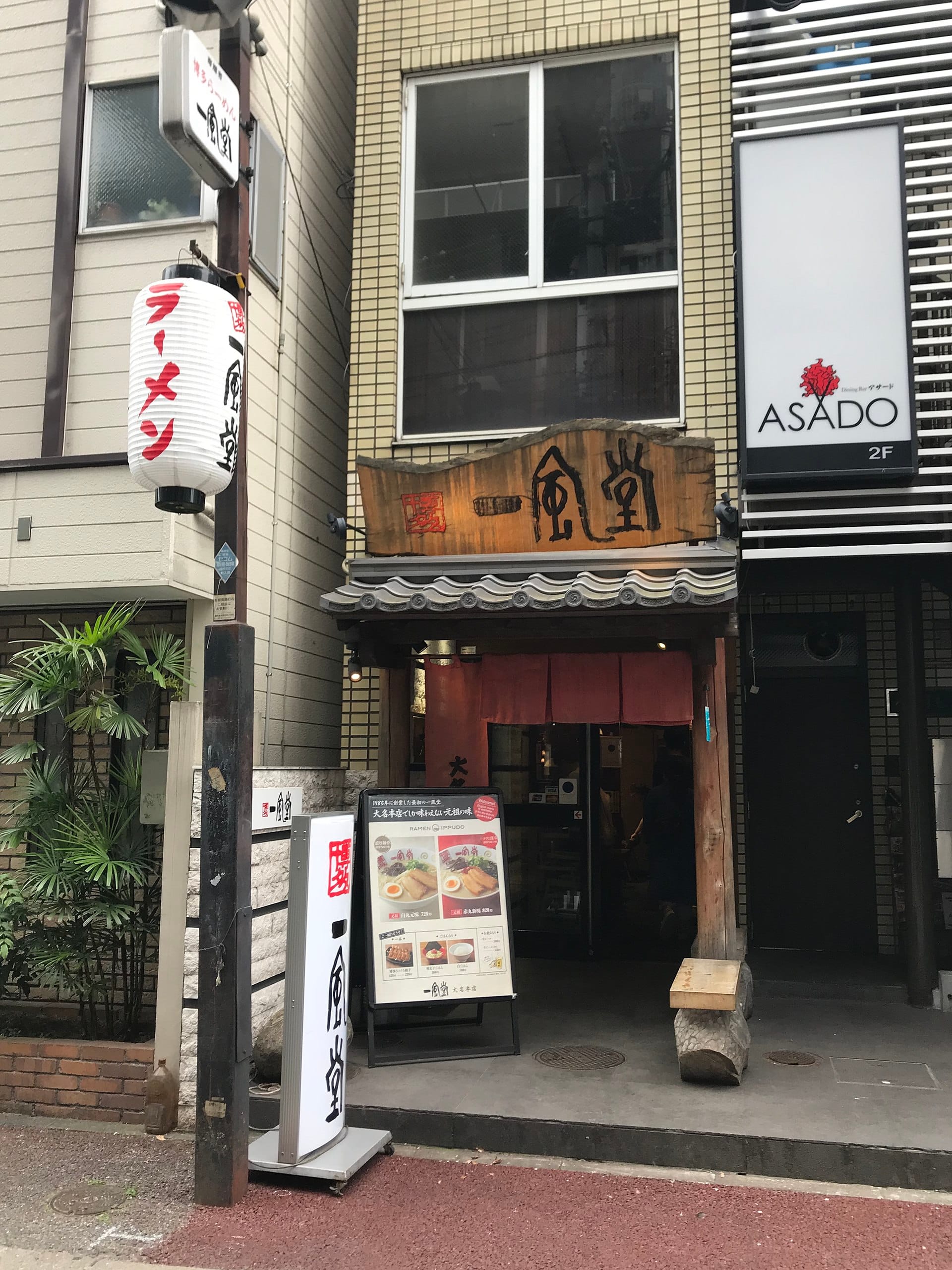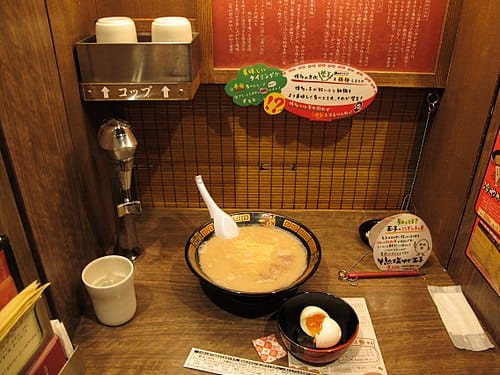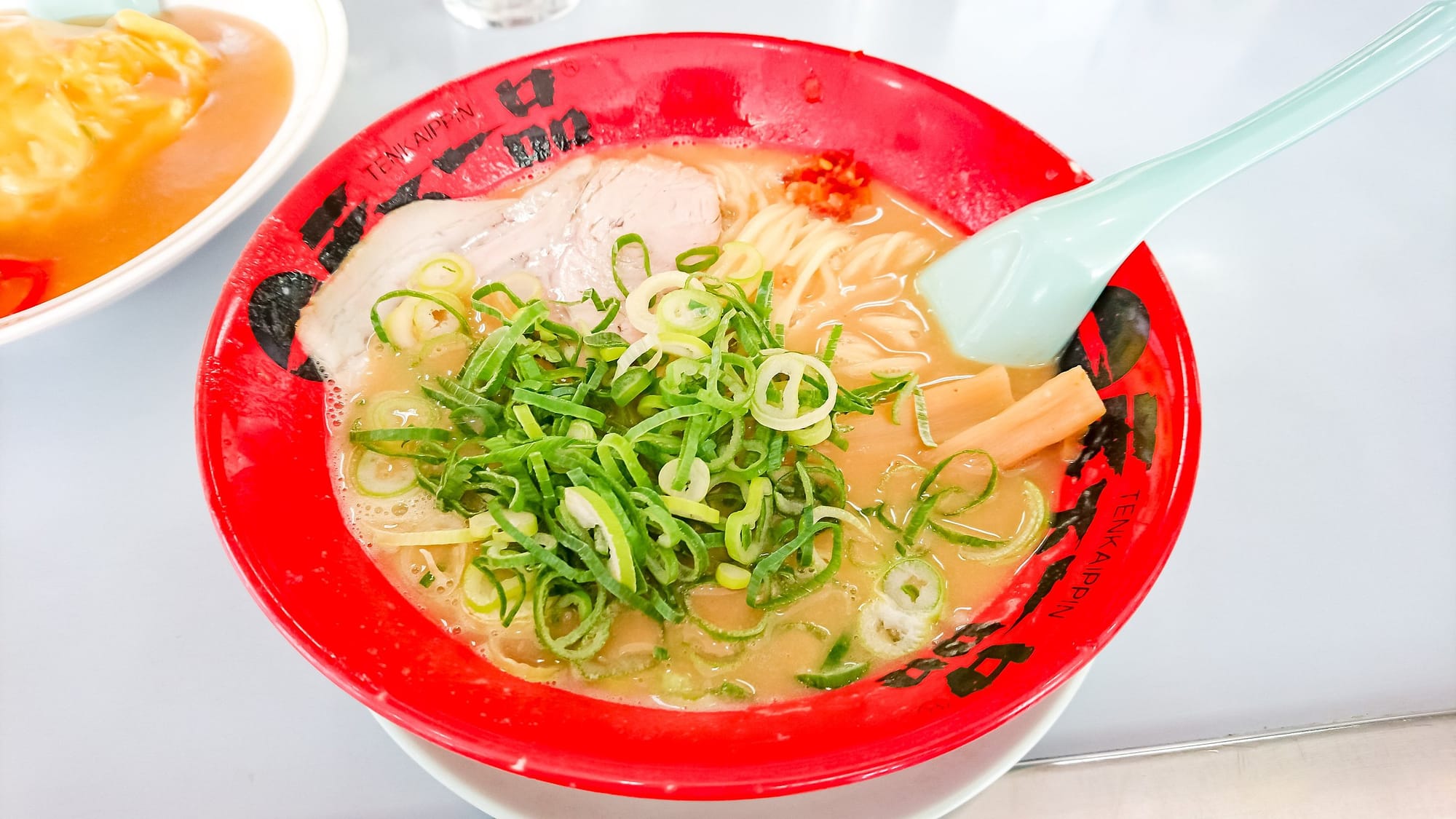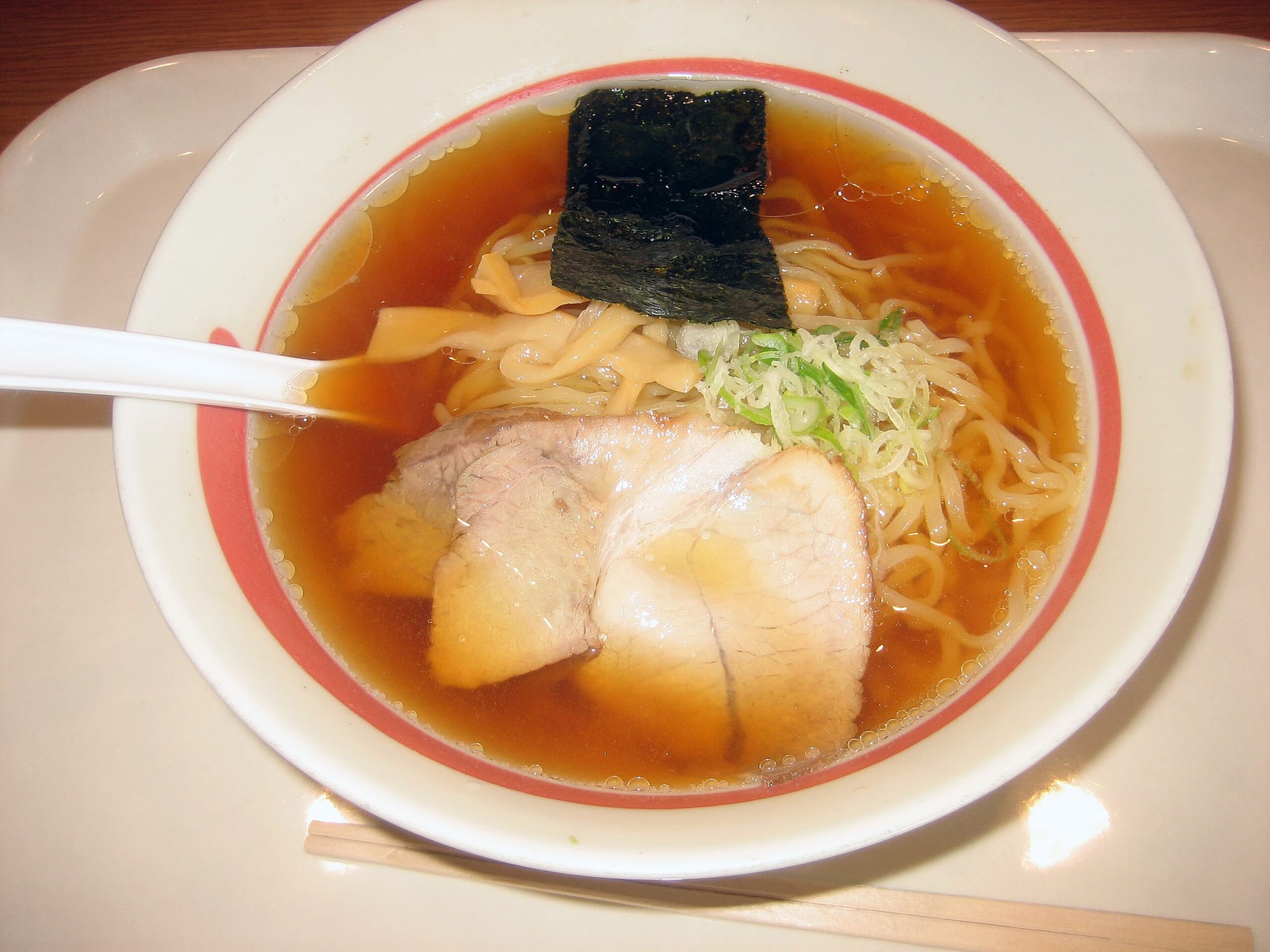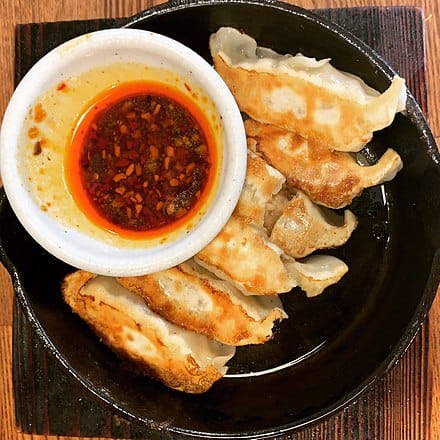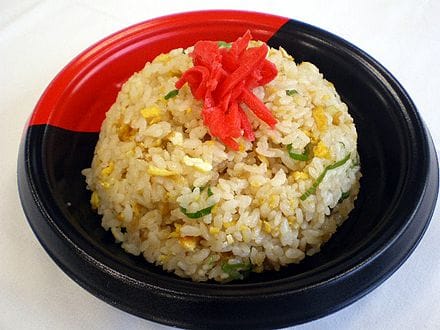"Ramen" is an attractive dish that makes many Japanese people want to eat it just by hearing the word.
During my student days, when I was studying late into the night, I would suddenly crave ramen and rush to a nearby ramen shop that was open late.
Recently, there are fewer ramen shops open late at night, but I still remember enjoying that combination of rich pork bone soup and thin noodles many times.
The charm of ramen is that there are various types of soup such as soy sauce, miso, salt, and pork bone, and the types of noodles also vary from thin to thick, straight to curly, depending on the shop.
Ramen is a mysterious food. While it's a popular food loved by many people, it's also very profound, and ramen shops that put a lot of passion into researching ramen can gain cult-like popularity similar to a religion. Some even say that ramen is an art.
If you've come to Japan, you can't miss out on this profound world of ramen!
Like many Japanese people, I'm a big ramen lover and have probably eaten over 1,000 bowls of ramen so far.
In this article, I'd like to introduce you to the deep world of ramen, from the types of ramen and unique styles to introductions of famous shops.
What is Ramen
Source: Wikipedia
Ramen is Japan's national dish that every Japanese person knows and has captivated people around the world. Originally introduced from China, it has now evolved into a unique Japanese food culture, even creating global brands like Cup Noodles.
The basics of ramen are noodles made from wheat flour, soups with various flavors such as soy sauce, miso, salt, and pork bone, and toppings like chashu pork and menma (bamboo shoots). But that's not all. One of the charms is that there are regional ramen varieties loved as local specialties.
During my student days, when I was studying late into the night, I often craved ramen. When I rushed to a ramen shop open late at night and ate a rich pork bone ramen, I felt like energy was returning to my body tired from studying.
Like this, for us Japanese, ramen is not just food. It's almost like a mental support, and for hardcore ramen maniacs, it's even a part of life, deeply loved.
If you've come to Japan, please try to experience this profound world of ramen.
Types of Ramen Loved by Japanese People
Ramen is mainly divided into several types based on the soup. Here, I'll introduce the types of ramen that are especially loved in Japan and can be eaten anywhere.
Shoyu Ramen
Source: Wikipedia
Shoyu ramen is the most common ramen in Japan. It's a classic ramen with soy sauce-based soup topped with standard toppings like chashu pork, menma, nori seaweed, and green onions.
But shoyu ramen isn't just one type. There are various variations depending on the region. For example, Kitakata ramen has a soy sauce-based soup concentrated with the umami of dried sardines.
I'll introduce these regional ramen later, so please read this article to the end!
Miso Ramen
Source: Wikipedia
Miso ramen is a ramen based on "miso," a traditional fermented food that Japan is proud of. It's known to have originated in Sapporo, Hokkaido, and is characterized by its rich miso soup.
I fell in love with miso ramen when I encountered a bowl in Sapporo. The hot miso ramen permeated my body chilled by the cold, and I was quite moved by the richness of the miso soup with the sweetness of butter and corn melted into it.
You can eat miso ramen in Tokyo and Osaka too, but please try to taste it in Hokkaido, its birthplace.
Shio Ramen
Source: Wikipedia
Unlike soy sauce or miso, shio ramen is characterized by its simple salt flavor. However, due to this simplicity, it can bring out the umami of the ingredients to the maximum. The clear soup using chicken bones or seafood spreads the original taste of the ingredients throughout your mouth with just one sip.
Another charm of shio ramen is its light taste. It's not as rich as soy sauce, miso, or tonkotsu, so you don't get tired of it. That's why it's also delicious to squeeze lemon on it and eat it refreshingly. Shio ramen is popular among connoisseurs even among Japanese ramen lovers.
Tonkotsu Ramen
Source: Wikipedia
Tonkotsu ramen is characterized by its white, cloudy soup made by simmering pork bones for a long time. The creamy, rich soup is also popular overseas. I think this is closest to what readers of this article imagine when they hear "ramen."
Hakata in Fukuoka is known as the birthplace of tonkotsu ramen. I've also eaten authentic tonkotsu ramen in Hakata, and I remember being shocked that "It's completely different from what I ate in Tokyo!"
Combination
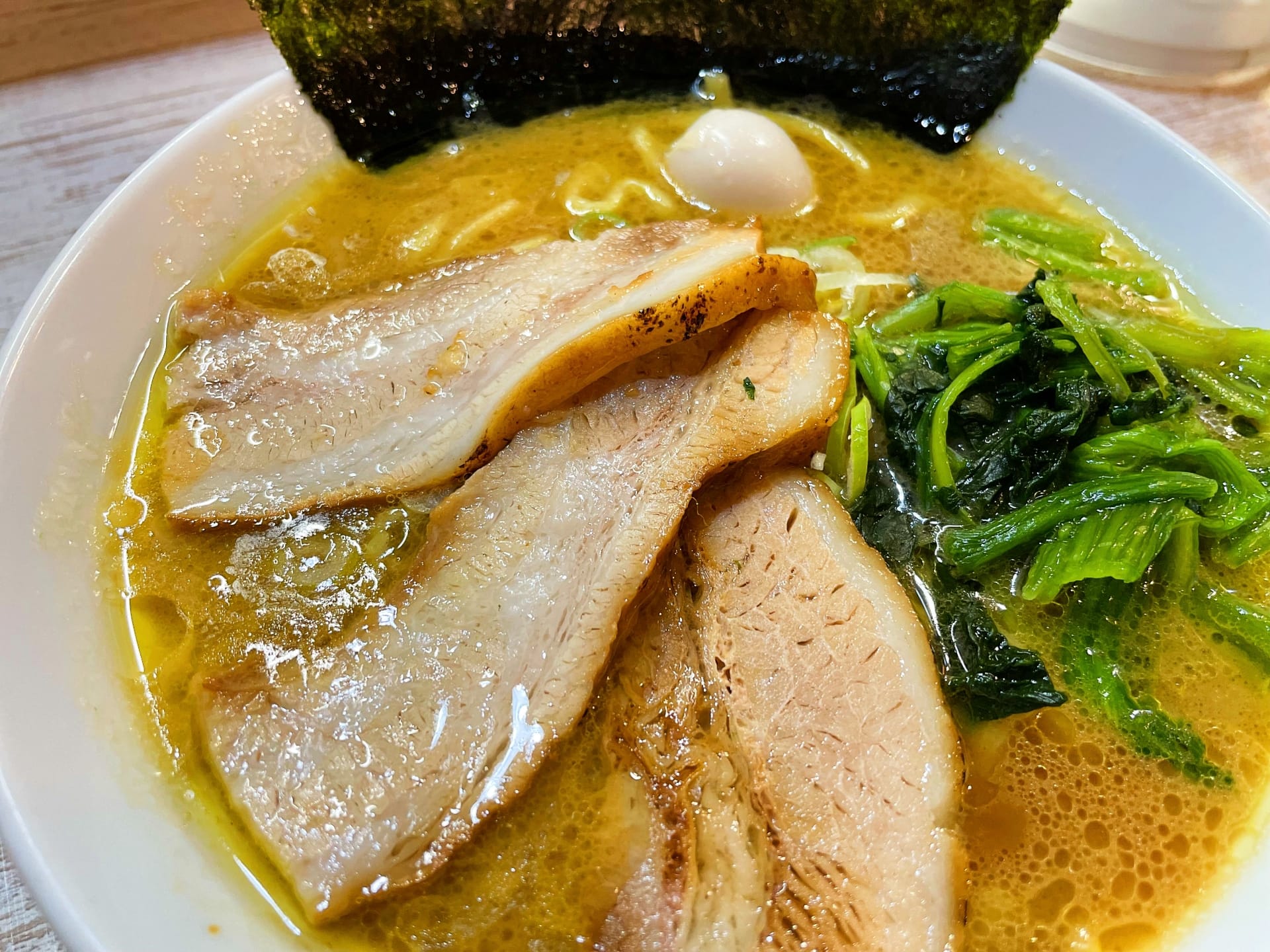
Ramen flavors are not necessarily standalone, but can become even more delicious when combined. There are also combination ramen that mix multiple flavors, such as tonkotsu shoyu or shio tonkotsu.
The ramen shop near my house specializes in tonkotsu shoyu ramen, so I often go there to eat combination ramen. The richness of tonkotsu and the savory aroma of soy sauce are exquisitely intertwined, which is quite recommendable.
Unique Ramen Styles in Japan
The types of ramen introduced earlier were mainly divided by soup.
However, in Japan, there are various types of ramen not only in terms of soup but also in terms of ingredients and eating styles.
Here, I'll introduce some unique ramen that are quite loved by Japanese people.
Ie-kei Ramen
Source: Tabelog by Asagaya
Ie-kei ramen is a tonkotsu shoyu ramen that originated in Yokohama. The rich and thick tonkotsu shoyu soup goes well with the thick curly noodles. Standard toppings include chashu pork, spinach, nori seaweed, and more.
I fell in love with Ie-kei ramen when I traveled to Yokohama as a student. When I entered a shop recommended by a local, it was a popular shop with a line, and the Ie-kei ramen I ate for the first time was shockingly delicious.
Along with the "Jiro-kei ramen" I'll introduce next, it's one of the ramen types with quite fanatical maniacs.
Jiro-kei Ramen
Source: Tabelog by Miyashimosan
Jiro-kei ramen is a ramen style originating from "Ramen Jiro" in Tokyo. It's characterized by a rich soup using a large amount of pork bones and vegetables, extra thick noodles, and a mountain of vegetables. The chashu pork is also thick and voluminous.
There are shops offering Jiro-kei ramen throughout Japan, and it has quite strong (sometimes extreme) fans.
At first, I was overwhelmed by the volume and richness of Jiro-kei ramen. Now there are many Jiro-kei shops, but I find it interesting that the taste varies quite a bit depending on the shop.
It's by far the highest calorie type among ramen, but when you eat Jiro-kei ramen, please forget about that and enjoy the impactful ramen!
Tori Paitan Ramen
Source: Wikipedia
Tori paitan ramen is characterized by its white, cloudy soup made by simmering chicken bones for a long time. It has a light yet rich taste full of collagen. It goes well with thin or medium-thick noodles, and simple toppings like chashu, boiled egg, and green onions suit it well.
Compared to other ramen, there are fewer shops where you can eat tori paitan ramen, but it's relatively easy to find in urban areas like Tokyo and Osaka.
Abura Soba / Maze Soba
Source: Wikipedia
Abura soba and maze soba are ramen without soup, where you mix noodles and ingredients to eat. The noodles are often thick straight noodles, seasoned with a soy sauce-based sauce with pork umami.
Standard toppings include chashu pork, menma, green onions, and nori seaweed. When eating, it's common to adjust the taste by adding chili oil or vinegar.
Abura soba has an image of being healthier than ramen because it doesn't have soup. But the taste is authentic. The soy sauce sauce clings to the noodles and mixes with the umami of the ingredients, creating an irresistibly delicious taste (it might not end up being healthy after all).
Tsukemen
Source: Wikipedia
Tsukemen is a style of ramen where noodles and soup are served separately, and you eat by dipping the noodles in the soup. The noodles are often thicker, characterized by a chewy texture.
The soup is mainly a rich pork bone and seafood soup, topped with ingredients like chashu pork, menma, nori seaweed, and egg. The interesting point about eating is that you can adjust the hardness of the noodles and dipping time in the soup according to your preference.
My encounter with tsukemen was shocking. Until then, I thought ramen was always noodles and soup integrated, so I was confused by tsukemen served separately.
But once I tried it, I was moved by its deliciousness. The soup is richer than regular ramen, so you can enjoy the flavor of seafood, and now it's one of my favorite types of ramen.
Hiyashi Chuka
Source: Wikipedia
Hiyashi chuka is a cold ramen known as a standard summer menu item. Thin noodles or tsukemen noodles are used, topped with ingredients like kinshi tamago (shredded egg crepe), cucumber, ham, and tomato.
The sauce is often a light soy sauce-based one, and you can enjoy flavor variations by adding sesame sauce or mustard.
Not just me, but many Japanese people always eat hiyashi chuka when summer comes. Eating cold ramen on a hot day is a great feeling! The noodles have a smooth texture that feels good in the throat, and the light sauce stimulates the appetite.
In summer, you can get hiyashi chuka at convenience stores and supermarkets, so please give it a try.
Representative Regional Ramen
The Hakata ramen from Fukuoka, Sapporo ramen from Hokkaido, and Kitakata ramen from Fukushima that I'll introduce next are called Japan's three great ramen and are especially popular.
You can eat all of them in big cities, so please try comparing them.
Hakata Ramen
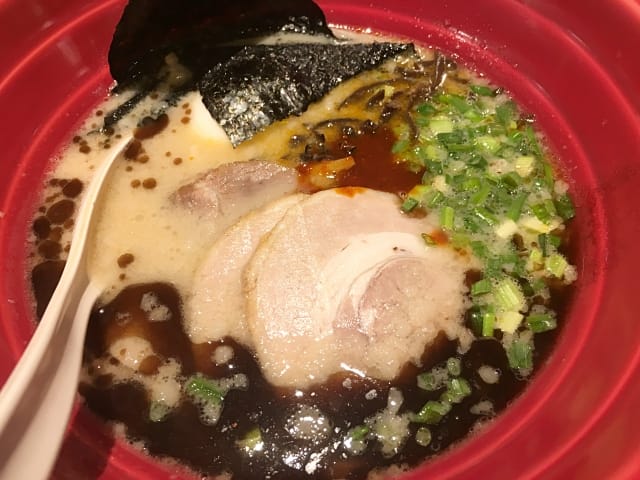
Hakata ramen is known nationwide as a specialty dish of Fukuoka. It's characterized by a rich soup made by simmering pork bones for a long time and thin straight noodles. Standard toppings include chashu pork, pickled ginger, sesame seeds, and green onions.
The rich pork bone soup of Hakata ramen is addictively delicious once you try it. The "kaedama" culture of ordering extra noodles is also said to have started with Hakata ramen.
Chain Stores Where You Can Eat Hakata Ramen
When it comes to famous Hakata ramen chain stores, there's Ippudo and Ichiran. Both are popular shops with many branches both domestically and internationally.
Ippudo offers various ramen besides pork bone ramen and is characterized by abundant customizable toppings. On the other hand, Ichiran is known for its taste concentration counter where you can customize your ramen to your liking.
You can eat them not only in Hakata but also in Tokyo and Osaka, so please visit an Ippudo or Ichiran near your accommodation.
Ippudo Website: https://www.ippudo.com/
Ichiran Website: https://ichiran.com/
Sapporo Ramen
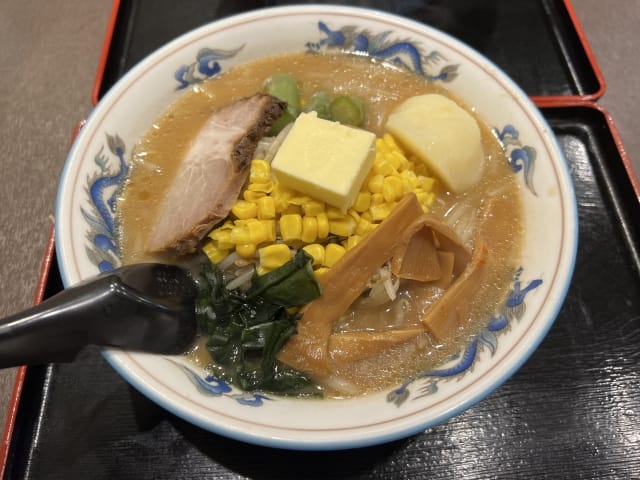
Sapporo ramen is famous nationwide as a specialty ramen from Hokkaido in the north of Japan. The rich miso-based soup goes well with thick curly noodles.
Standard toppings include chashu pork, corn, butter, and white onions. When miso flavor is added to the soup made with pork bones or chicken bones, it creates a unique deep flavor. The sweetness of butter and corn also adds an accent, making it an addictive deliciousness.
Chain Stores Where You Can Eat Sapporo Ramen
When it comes to Sapporo ramen chain stores, Yamaokaya is famous. It's a chain originating from Hokkaido, with rich miso ramen as its signature menu.
Besides miso ramen, they offer various types of ramen such as soy sauce, salt, and tonkotsu. While there aren't many stores in the Kansai region, they have branches nationwide, especially in Hokkaido and Tokyo, so you can easily enjoy the taste of Sapporo ramen.
Yamaokaya Website: https://www.yamaokaya.com/
Kitakata Ramen

Kitakata ramen, originating from Kitakata City in Fukushima Prefecture, is characterized by its light soy sauce-based soup and flat curly noodles. Standard toppings include chashu pork, menma, and green onions.
The soup, made using dried sardines and vegetables, has a light yet deep umami taste. When I eat Kitakata ramen, I feel like I'm experiencing the origin of "ramen," Japan's soul food.
Chain Stores Where You Can Eat Kitakata Ramen
When it comes to Kitakata ramen chain stores, Bannai Shokudo is famous. They have expanded nationwide, mainly in Tokyo, offering traditional Kitakata ramen.
The simple yet profound taste is delicious enough to impress even ramen connoisseurs. Please casually experience the charm of Kitakata ramen at Bannai Shokudo.
Bannai Shokudo Website: https://ban-nai.com/
Types of Ramen Shops in Japan
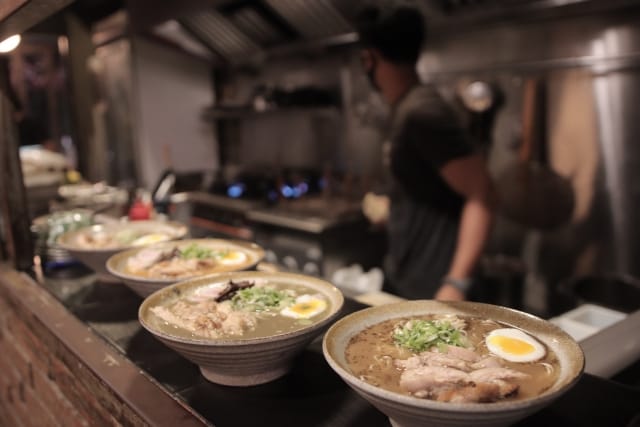
There are various types of ramen shops in Japan. From chain stores to local famous shops, each shop offers unique ramen. As a ramen lover, I feel like I want to conquer them all, as they're all so attractive.
But for first-timers, I recommend starting with chain stores. They offer ramen that everyone can easily eat, so even ramen beginners can enter with peace of mind. Ippudo and Ichiran often have English menus as well.
On the other hand, ramen specialty shops and local Chinese restaurants are popular among ramen maniacs. Ramen specialty shops are authentic, particular about their soup and noodles. Famous shops are known to be quite delicious and have many fans.
Small Chinese restaurants in town (machichuka) are also unexpectedly hidden gems. The charm is that you can enjoy old-fashioned flavors in a local atmosphere.
Authentic Chinese restaurants also sometimes offer ramen. However, the taste is a bit different from Japanese ramen and closer to Chinese ramen, quite light. It has a different charm from other ramen, so it's worth trying.
Popular Ramen Chain Stores in Japan
If foreigners want to try ramen in Japan, chain stores are easy to enter and recommended.
In addition to Ippudo and Ichiran, which I briefly introduced earlier with Hakata ramen, I'll introduce other recommended chain stores.
Ippudo
Source: Wikipedia
Ippudo is a global brand with fans worldwide, known as a famous tonkotsu ramen shop originating from Fukuoka. Their signature menu is "Shiromaru Motoaji," with tonkotsu soup and thin noodles. One of the attractions is the abundant topping menu that allows you to customize to your liking.
I was impressed by the deep flavor of the soup at Ippudo. The umami of pork bone is concentrated, and you can feel happy with just one sip. The thin noodles also go perfectly with the soup.
When eating Ippudo's ramen, I can't help but feel the passion and pride for ramen. Ippudo, which has expanded stores worldwide, is truly a ramen brand that Japan can be proud of.
Website: https://www.ippudo.com/top/
Ichiran
Source: Wikipedia
Ichiran is a tonkotsu ramen specialty shop characterized by its "taste concentration counter" where you can concentrate on enjoying ramen in a booth-like space.
Their signature menu is "Tonkotsu Ramen" with rich pork bone soup and thin noodles. One of the attractions is that you can customize to your liking, including the richness of taste, amount of oil, hardness of noodles, and amount of soup. They have expanded stores to various countries worldwide and are popular overseas as well.
Ichiran's "taste concentration counter" creates a special and unique time to face ramen. The experience of enjoying ramen at your own pace without worrying about others will surely be a good memory of your Japan trip.
Website: https://ichiran.com/
Tenkaippin
Source: Wikipedia
Tenkaippin is a chain store known nationwide as a representative of "kotteri" (rich) miso ramen originating from Kyoto.
It's characterized by a very rich pork bone soup and thick noodles. Now it's not only in Kyoto but one of the ramen shops you can casually drop by in various parts of the country.
If you imagine a clear soup when you hear "ramen," Tenkaippin's rich soup might be quite shocking. It's also a strangely addictive ramen (I often crave it in the middle of the night).
Website: https://www.tenkaippin.co.jp/
Kourakuen
Source: Wikipedia
Kourakuen is a ramen chain store originating from Fukushima Prefecture, popular among students and families for its reasonable prices and good taste.
Their signature menu is the orthodox soy sauce-based "Chuka Soba". It's characterized by a simple yet well-balanced taste. Side menu items like gyoza are also abundant, so many people order them along with ramen.
I remember often going to Kourakuen with friends during my student days. I think the charm of Kourakuen is that you can enjoy delicious basic ramen at reasonable prices.
Website: https://www.kourakuen.co.jp/
Typical Ramen Toppings
Various toppings are added to ramen. From standard green onions, menma, and chashu to original toppings of each shop, there's a wide variety.
Many ramen shops offer "Special Ramen" which includes all the recommended toppings of that shop, so if you're unsure, I recommend ordering this.
If you're a meat lover, choosing "Chashu Ramen" is recommended as you can eat ramen topped with plenty of meat.
Chashu
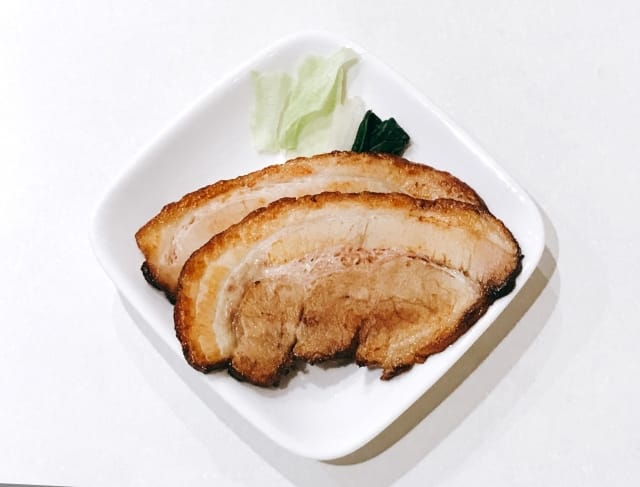
Chashu is pork loin or belly simmered in soy sauce-based sauce. It's characterized by a soft and juicy taste.
The style of chashu varies depending on the ramen shop, with thick-sliced chashu characterized by its volume. On the other hand, thin-sliced chashu is so soft it melts in your mouth. Both go perfectly with ramen.
Green Onions
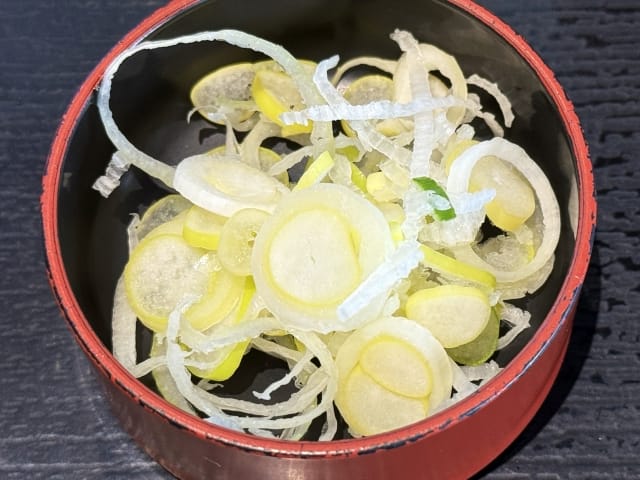
Chopped green onions or julienned white parts of green onions add a crisp texture and fresh flavor. It's no exaggeration to say that they're indispensable to ramen. The flavor of green onions enhances the spiciness of the soup.
Menma
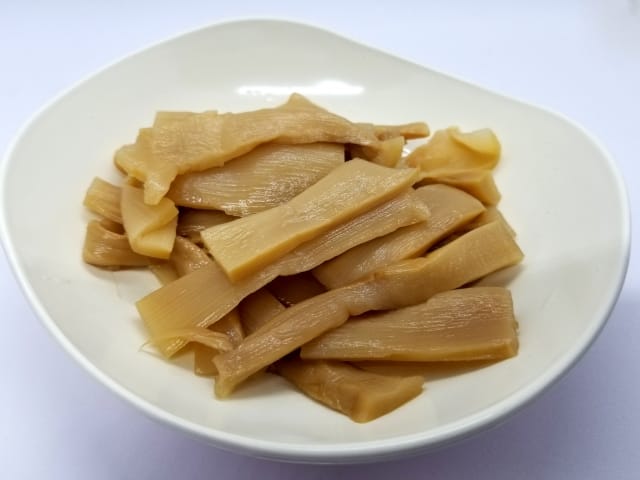
Menma is bamboo shoots simmered in soy sauce-based sauce, characterized by its unique texture and flavor. It goes well with various soups such as soy sauce ramen, salt ramen, and miso ramen. Many ramen shops include it as a topping from the start.
Ajitama (Flavored Egg)
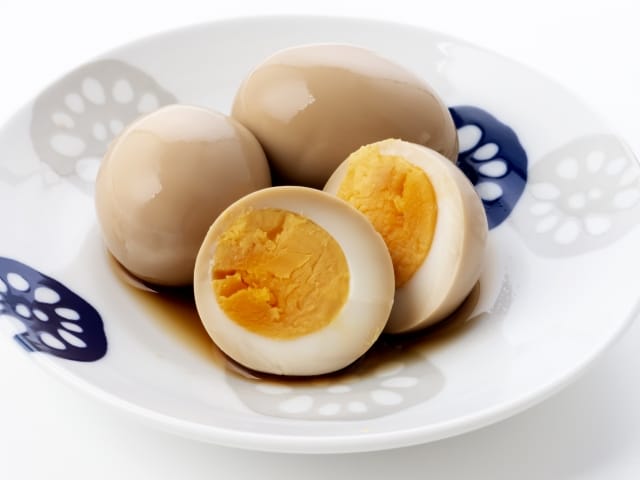
This is a soft-boiled egg marinated in soy sauce-based sauce. The creamy texture of the yolk and rich taste are irresistible.
It also goes perfectly with the soup, especially with soy sauce ramen or tonkotsu ramen. My favorite way to eat it is to break the yolk of the ajitama and mix it with the soup.
Vegetables
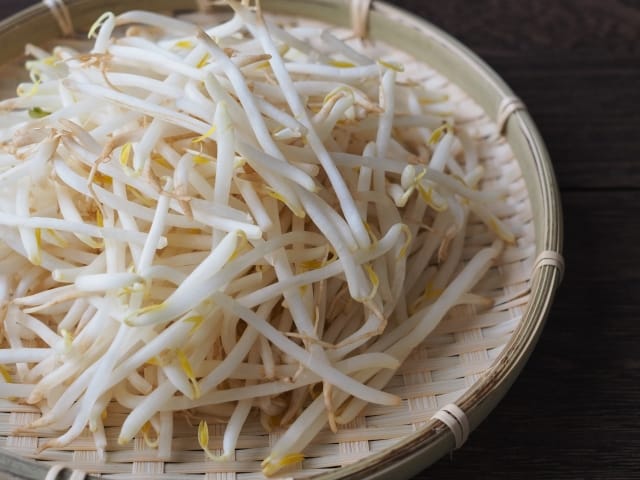
Adding vegetables as a topping to ramen is also popular. Especially, bean sprouts (moyashi) and spinach are standard. The crisp texture of bean sprouts enhances the richness of ramen. It goes particularly well with miso ramen. On the other hand, spinach is attractive for its high nutritional value rich in vitamins.
Corn
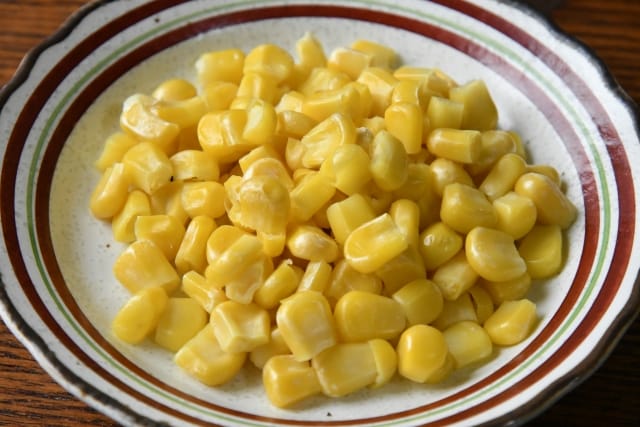
Corn is a topping that adds sweetness and texture, and it goes especially well with miso ramen. The sweetness of corn enhances the flavor of miso. If you're eating miso ramen, try topping it with butter, which I'll introduce next.
Butter
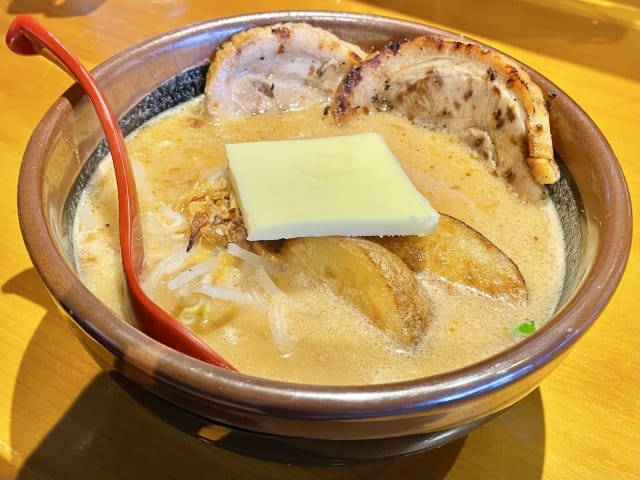
Butter is an indispensable topping for miso ramen. Adding butter makes the soup milder and increases its richness. Eating miso ramen with butter on a cold day warms both body and soul. Especially miso butter corn ramen in Hokkaido is incredibly delicious, so make sure to eat it when you visit Hokkaido!
Nori (Seaweed)
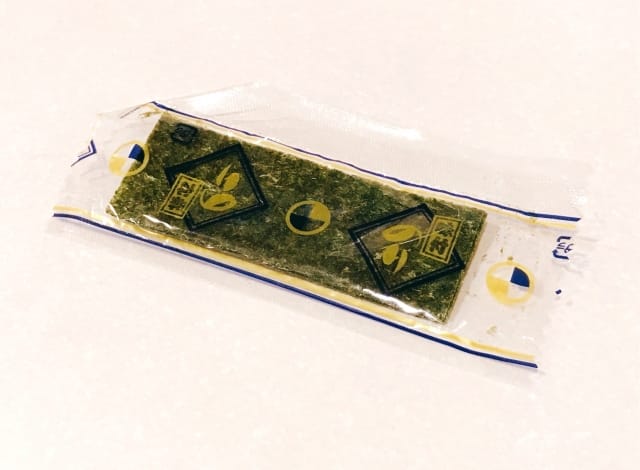
Nori is a topping that adds the aroma and flavor of the sea. I recommend topping it on soy sauce ramen or salt ramen. I like the flavor of nori so much that I always add plenty of it.
Menus Often Paired with Ramen by Japanese People
In Japan, it's common to eat side dishes along with ramen.
At ramen shops, you can order these separately, or they're often available as a "set" where you can eat ramen and various side dishes introduced next at a good value.
Gyoza
Source: Wikipedia
Ramen and gyoza are the ultimate combination loved by Japanese people. Gyoza, characterized by its crispy skin and juicy filling, also goes perfectly with ramen soup. Many ramen shops offer their proud gyoza. I always order gyoza when I eat ramen.
Chahan (Fried Rice)
Source: Wikipedia
Chahan also goes perfectly with ramen. You can enjoy a different deliciousness by mixing the fluffy textured chahan with ramen soup. Chahan with ingredients like chashu pork, egg, and green onions is especially popular.
A set of ramen and chahan is full of volume, guaranteed to fill you up.
Half Rice
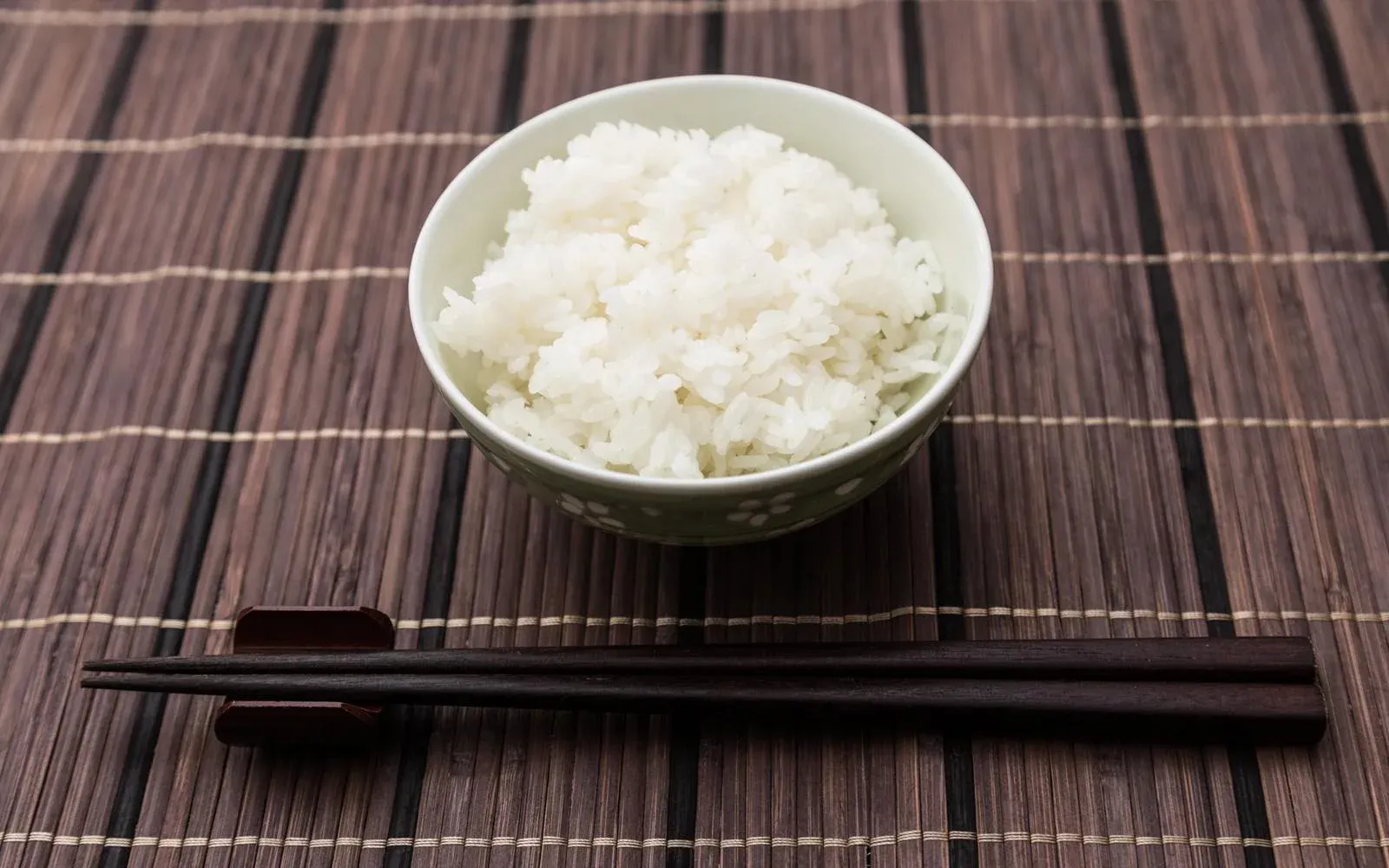
Many Japanese people like to eat ramen soup with rice, and many ramen shops offer half rice.
If you have soup left at the end, it's also recommended to put the half rice in it for a variation. You can enjoy the soup to the last drop.
Beer

Ramen and beer are actually one of the combinations in Japanese food culture.
Especially the combination of rich tonkotsu ramen and beer is the best. The crispness of the beer refreshingly washes away the greasiness of the tonkotsu soup.
Many ramen shops serve beer, so please give it a try. But be careful not to drink too much.
Manners and Precautions at Ramen Shops
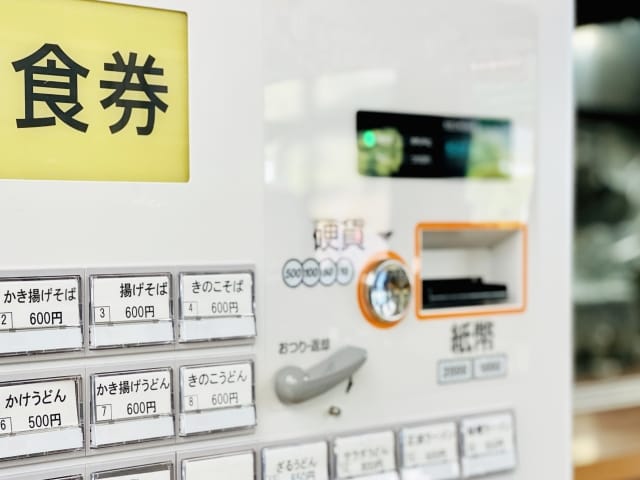
Ramen shops in Japan have their own manners and precautions. If you don't know them, you might sometimes get scolded, so please make sure to check the following points when going to ramen restaurants, including easily accessible chain stores.
Don't Stay Long
Ramen shops are basically places to "eat quickly and leave quickly". They make profits by increasing turnover, so staying long after finishing eating is disliked.
In some cases, you might be warned by the staff, so leave immediately after finishing eating.
It's OK to Make Noise When Eating Noodles
In Japan, eating ramen noodles with a slurping sound is not considered rude. Rather, it's common to slurp when eating noodles.
Choose a Spacious Shop When with Children
When going to a ramen shop with small children, it's better to avoid shops with only counter seats. Counter seats can be dangerous for children to sit on, and the eye level of other customers is high, so they might not notice children in strollers.
When with children, I recommend choosing a spacious ramen shop with tatami seats or table seats.
Know the "Ticket" System
Many ramen shops in Japan adopt a ticket system. There's a ticket vending machine near the entrance, so you buy a ticket for the ramen you want to eat there before sitting down.
Instead of calling the staff to order, you just hand over the ticket. You might be confused if you're not used to it, but this is the style of ramen shops.
Especially at popular shops, the menu is often only in Japanese, so if you have trouble choosing, ask the customers around you or the staff "Which one do you recommend?". If you ask "Osusume wa dore desuka?" in Japanese, they will tell you, so it's convenient to remember this phrase.
Ramen Eaten by Japanese People at Home
In Japan, ramen is not only enjoyed at restaurants but also often eaten at home.
For travelers, I recommend first enjoying authentic ramen at shops, but if you're staying in Japan for a long time, please try cup noodles or packaged ramen as well.
Cup Noodles
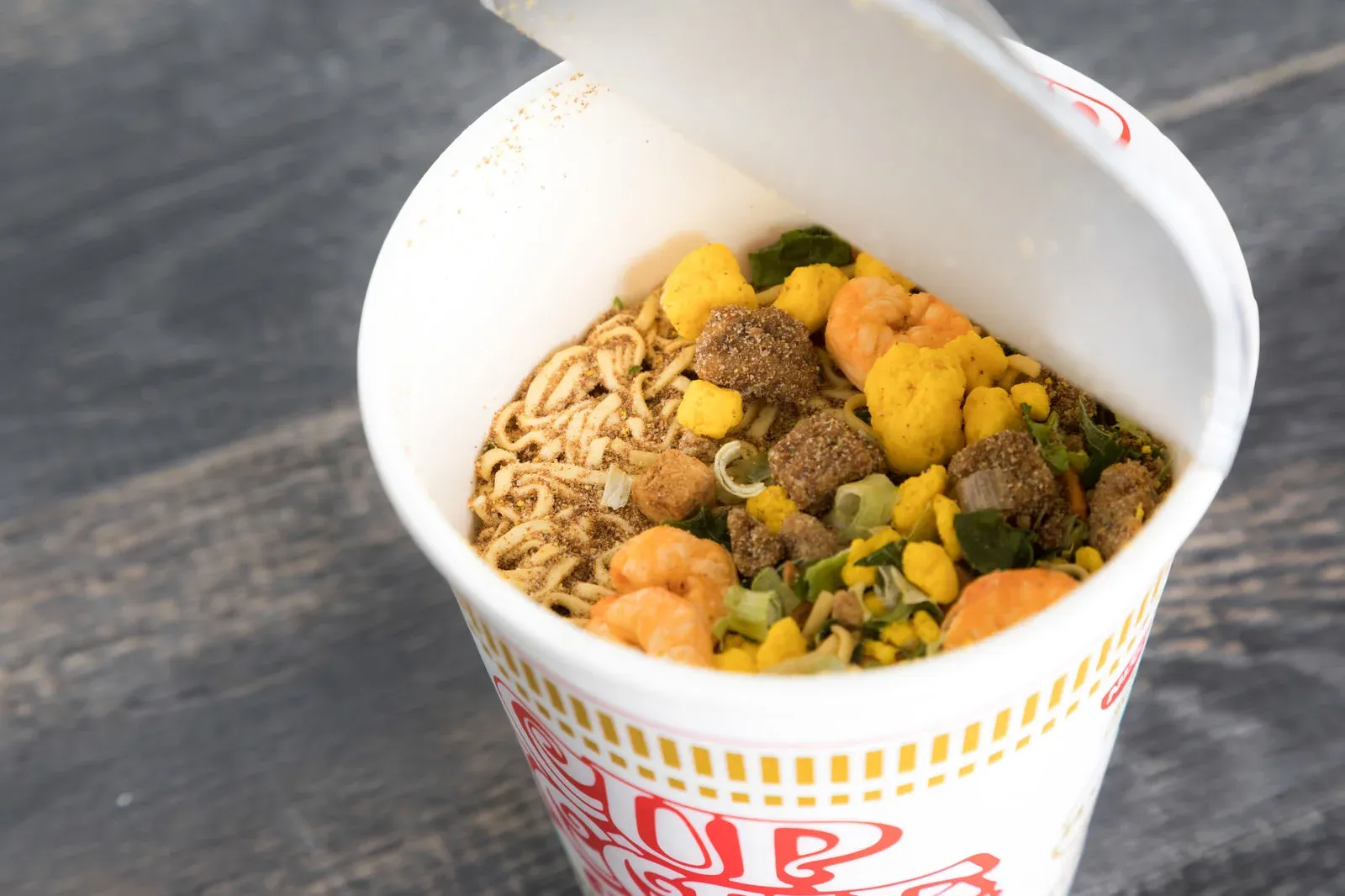
Japan is the birthplace of cup noodles. Various manufacturers sell a wide variety of cup noodles. The charm is that you can eat them easily by just adding hot water.
Chain stores I introduced like Ippudo, Ichiran, and Tenkaippin also sell their original cup noodles. While eating at the shop is overwhelmingly more delicious, cup noodles are also recommended if you want to casually enjoy ramen from famous shops.
They're also excellent as preserved food, and many households stock them in case of disasters. In my house too, there's always a stock of cup noodles.
Packaged Ramen
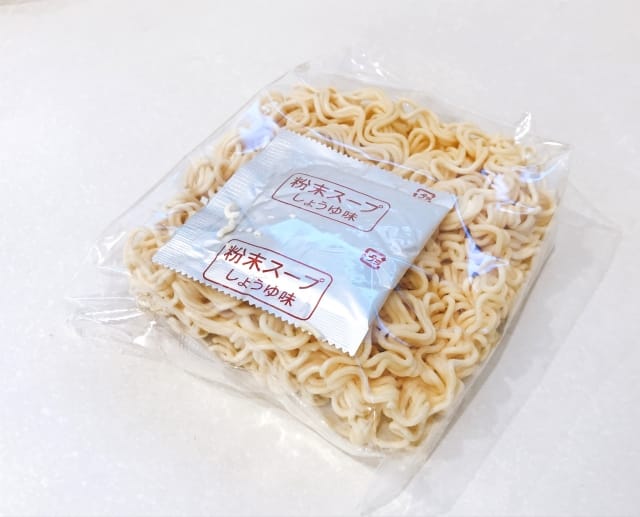
Packaged ramen (Fukuromen) allows you to enjoy a more authentic taste than cup noodles. While you need to boil the noodles, it's nice that you can arrange it to your liking as the soup and ingredients are separate.
I enjoy arranging it by adding plenty of vegetables or dropping an egg. Because you can easily recreate the taste of ramen shops at home, many Japanese people have their own "my home ramen" recipes.
Frequently Asked Questions About Japanese Ramen
Finally, I'll answer common questions that foreigners often have about Japanese ramen.
Are There Also Various Types of Ramen Noodles?
Ramen noodles have various types depending on thickness and shape. There are thin noodles, medium-thick noodles, thick noodles, straight noodles, curly noodles, and so on. Some shops even use homemade noodles. The type of noodles changes how they mix with the soup and the texture, so I recommend trying various types.
What's the Recommended Way to Eat Ramen?
The basic way to eat ramen is to taste the noodles and soup together. Slurp the noodles while drinking the soup. This repetition is the pleasure of eating ramen.
My recommendation is to add a little chili oil. The spiciness and aroma of chili oil enhance the taste of the soup. But if you're not good with spicy food, please enjoy the ramen as it is without adding chili oil.
In this article, I've introduced ramen, which can be called Japan's national dish without exaggeration.
There are various types of soups such as soy sauce, miso, salt, and pork bone, and the types of noodles are also abundant. There are also unique styles like tsukemen where you enjoy noodles and soup separately, and various regional ramen.
I'm glad if this article has conveyed even a little of the charm of ramen. When you come to Japan, please refer to this guide and try comparing various types of ramen!

